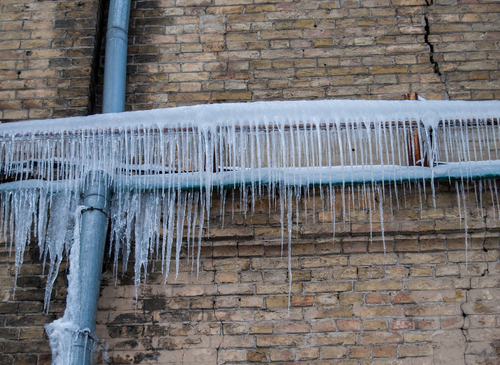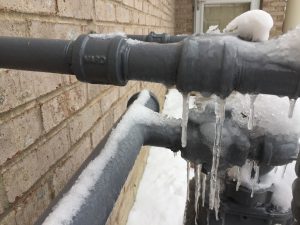How to Avoid Frozen Pipes in Cold Weather: Professional Tips
How to Avoid Frozen Pipes in Cold Weather: Professional Tips
Blog Article
This post which follows pertaining to How To Avoid Freezing Pipes is really interesting. Don't skip it.

Winter can damage your pipes, especially by freezing pipes. Right here's how to avoid it from happening and what to do if it does.
Intro
As temperatures decrease, the threat of frozen pipelines rises, potentially bring about costly repair services and water damage. Comprehending just how to prevent frozen pipelines is crucial for home owners in cold climates.
Avoidance Tips
Shielding vulnerable pipes
Wrap pipelines in insulation sleeves or make use of warmth tape to protect them from freezing temperatures. Focus on pipes in unheated or outside locations of the home.
Heating strategies
Maintain interior rooms sufficiently heated, particularly locations with pipes. Open up cupboard doors to permit cozy air to distribute around pipelines under sinks.
Exactly how to determine frozen pipes
Search for decreased water flow from taps, uncommon smells or sounds from pipelines, and visible frost on exposed pipelines.
Long-Term Solutions
Architectural modifications
Consider rerouting pipes far from exterior walls or unheated locations. Include additional insulation to attics, cellars, and crawl spaces.
Upgrading insulation
Invest in high-grade insulation for pipes, attic rooms, and walls. Proper insulation assists maintain constant temperatures and lowers the risk of icy pipelines.
Shielding Outside Pipes
Garden pipes and exterior faucets
Detach and drain pipes garden pipes prior to winter season. Set up frost-proof faucets or cover outdoor faucets with protected caps.
Understanding Frozen Pipelines
What causes pipes to freeze?
Pipelines ice up when exposed to temperatures listed below 32 ° F (0 ° C) for expanded durations. As water inside the pipes freezes, it expands, putting pressure on the pipe walls and possibly triggering them to rupture.
Dangers and problems
Icy pipelines can cause water disturbances, residential property damages, and costly repair services. Burst pipes can flood homes and create comprehensive architectural damage.
Indicators of Frozen Pipeline
Determining icy pipelines early can prevent them from rupturing.
What to Do If Your Pipes Freeze
Immediate activities to take
If you think icy pipelines, keep taps available to relieve pressure as the ice thaws. Utilize a hairdryer or towels soaked in warm water to thaw pipes gradually.
Conclusion
Preventing icy pipelines needs aggressive steps and fast reactions. By understanding the reasons, signs, and preventive measures, home owners can safeguard their pipes during cold weather.
6 Proven Ways to Prevent Frozen Pipes and Protect Your Home
Disconnect and Drain Garden Hoses
Before winter arrives, start by disconnecting your garden hoses and draining any remaining water. Close the shut-off valves that supply outdoor hose bibs and leave the outdoor faucet open to allow any residual water to drain. For extra protection, consider using faucet covers throughout the colder months. It’s also important to drain water from any sprinkler supply lines following the manufacturer’s directions.
Insulate Exposed Pipes
Insulating your pipes is an effective way to prevent freezing. Pipe insulation is readily available at home improvement stores and is relatively inexpensive. Pay close attention to pipes in unheated areas such as the attic, basement, crawl spaces, or garage. Apply foam insulation generously to create a buffer against the cold. You can also wrap your pipes in heat tape or thermostat-controlled heat cables for added warmth.
Seal Air Leaks
Inspect your home for any cracks or openings that could let in cold air. Seal any holes around the piping in interior or exterior walls, as well as the sill plates where your home rests on its foundation. Additionally, make sure to keep your garage door closed unless you’re entering or exiting. Leaving it open creates a significant air leak that can lead to frozen pipes.
Allow Warm Air Circulation
During cold snaps, it’s essential to allow warm air to circulate evenly throughout your home. Leave interior doors ajar to promote better airflow. Open kitchen and bathroom cabinets to help distribute heat consistently around the rooms. If you have small children or pets, be sure to remove any household chemicals or potentially harmful cleaners from open cabinets for safety.
Let Faucets Drip
A small trickle of water can make a big difference in preventing ice formation inside your pipes. When temperatures drop significantly, start a drip of water from all faucets served by exposed pipes. This continuous flow helps prevent the water from freezing. Additionally, running a few faucets slightly can relieve pressure inside the pipes, reducing the chances of a rupture if the water inside does freeze.
https://choateshvac.com/6-proven-ways-to-prevent-frozen-pipes-and-protect-your-home/

As a serious reader about Prevent Frozen Pipes , I was thinking sharing that piece of content was a good idea. Please pause to promote this blog entry if you enjoyed reading it. Many thanks for your time spent reading it.
Request Free Estimate Report this page